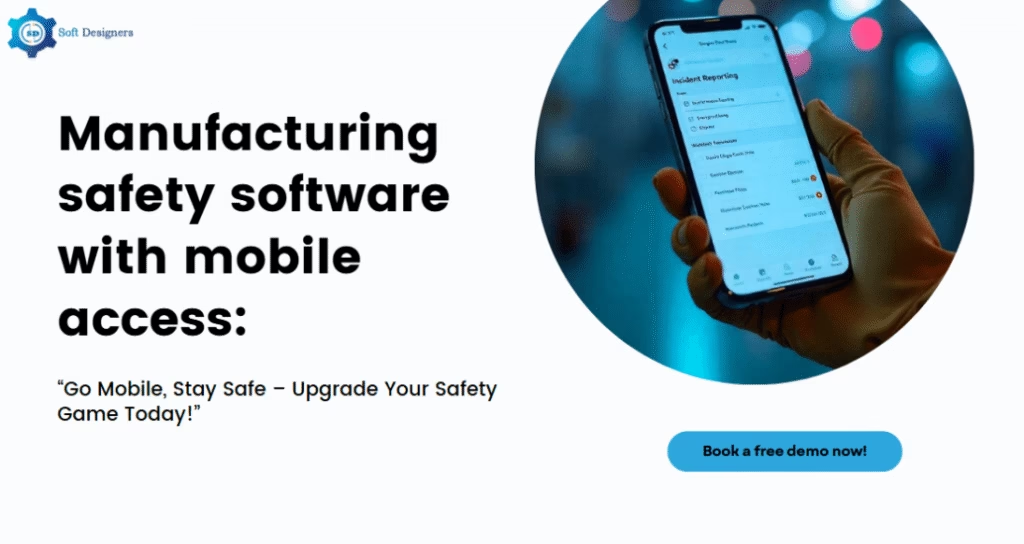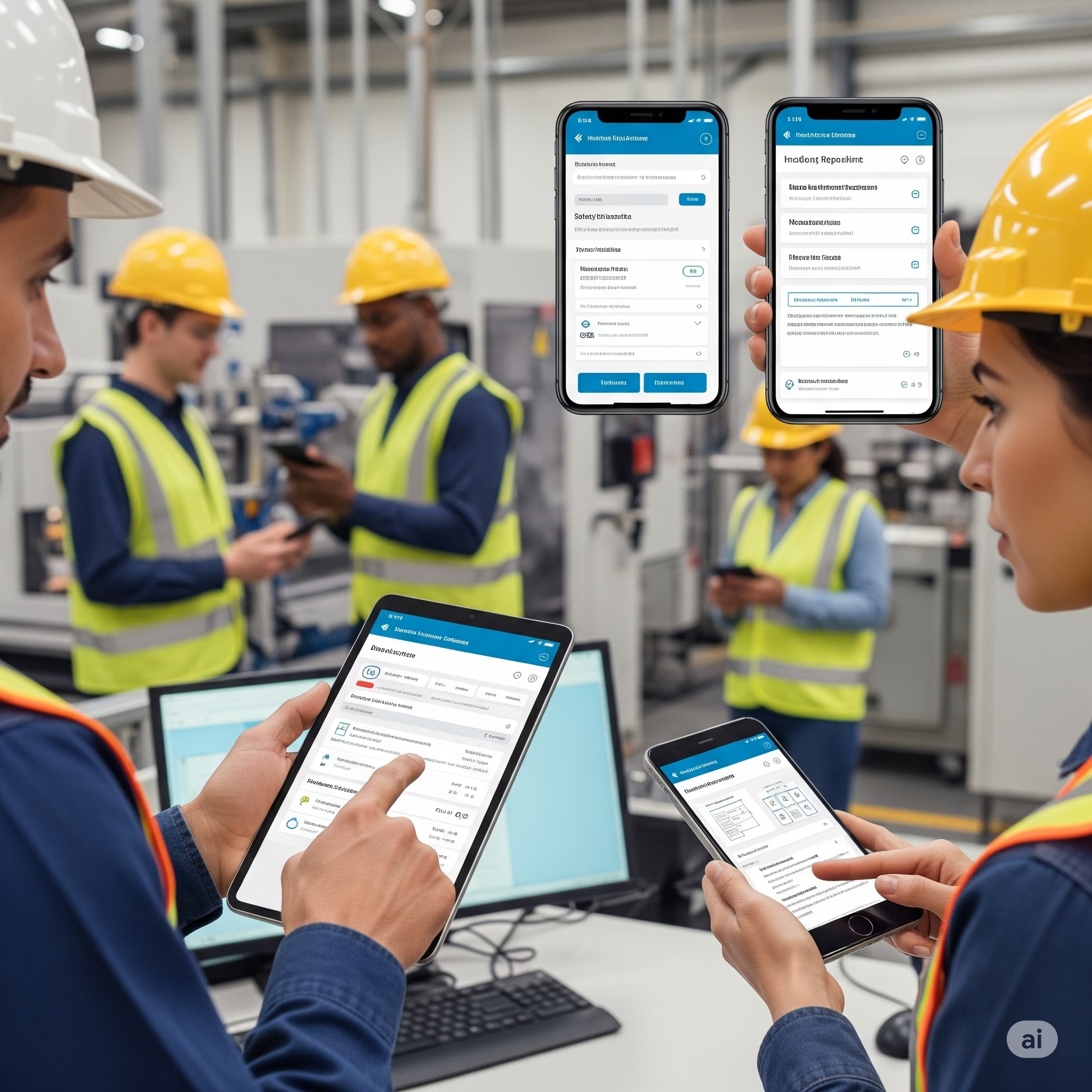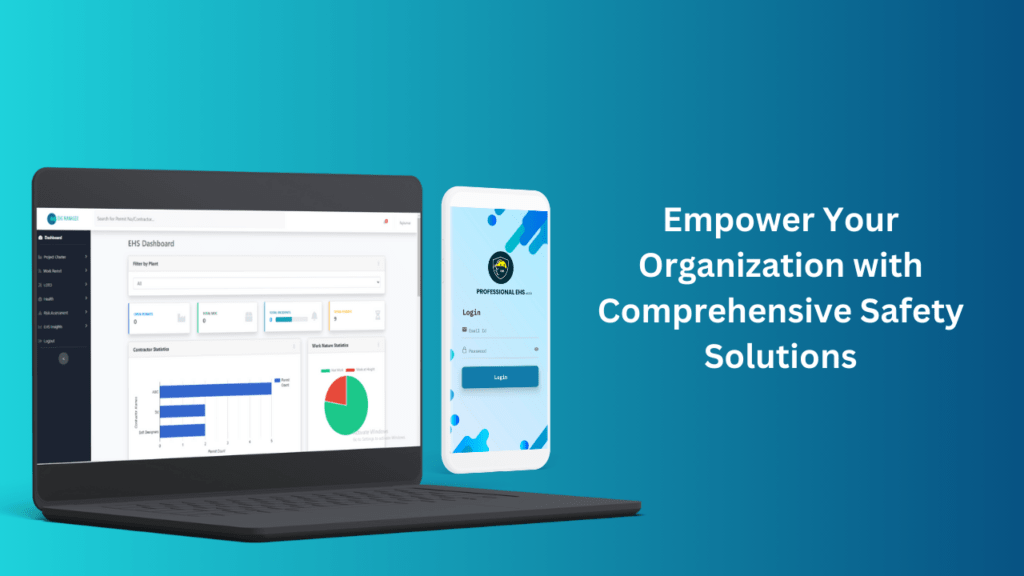Manufacturing safety software with mobile access:
Introduction:
Manufacturing safety software with mobile access empowers teams to report hazards, track incidents, and stay compliant anytime, anywhere. Mobile-friendly dashboards enable faster decision-making and quicker response to risks. Employees can upload photos, notes, and updates instantly through their phones.
What Is Mobile Safety Software?
Mobile safety software is a smart digital tool designed for use on smartphones and tablets. It gives teams instant access to inspections, incident reporting, and permits—anytime, anywhere. Whether on-site or remote, it keeps safety tasks moving in real-time. Stay compliant and responsive with everything at your fingertips.
Digitally Manage Permits to Work (PTW) with Mobile Access :
Managing Permits to Work (PTW) is a critical part of maintaining safety in manufacturing environments, especially during high-risk tasks like hot work, confined space entry, or electrical maintenance. Traditionally, PTWs involved paper-based forms, manual signatures, and time-consuming approvals often causing delays and missed safety checks.
Mobile-enabled safety software transforms this process by digitizing and automating PTW workflows.
How Mobile Access Enhances PTW Management:
1. Real-Time Permit Requests
Employees or contractors can raise a PTW request instantly from their mobile device. Whether they’re on the shop floor or at a remote location, they can:
- Select the job type (e.g., hot work, electrical)
- Attach relevant documents or images
2. Instant Notifications and Approvals
Once submitted, the system sends alerts to supervisors or EHS officers for review.
- Review risk assessments
- Approve or reject with digital signatures
- Add comments or request changes
3. Clear, Trackable Workflow
- Logged with time stamps
- Easily traceable for audits
- Monitored via dashboards or reports
4. Enhanced Compliance
Mobile PTW tools ensure:
- Mandatory safety checks can’t be skipped (system-enforced)
- Expired permits trigger alerts
- All documents are stored digitally for easy access during inspections or audits
5. Offline Capability
Even in no-network zones, users can:
- Fill out permit requests
- Save drafts for later submission
- Review safety checklists
Why It Matters:
- Faster approvals, reduced paperwork
- Fewer errors, more consistent safety checks
- Improved accountability, with a full audit trail
- Greater efficiency, especially for large or multi-site operations
Switching to Mobile: A Smarter Way to Manage Safety:
As manufacturing environments become more complex, safety management must evolve. Mobile safety software offers real-time access, faster responses, and improved control over day-to-day operations—making it a critical asset for modern manufacturers.
1. Instant Incident Reporting from the Shop Floor
A near miss or hazard shouldn’t wait. With mobile access, employees can report incidents the moment they occur using photos, voice notes, or video. No paper, no delays. This speeds up root cause analysis and immediate action.
2. Simplified Digital Inspections and Audits
Turn routine inspections into efficient mobile workflows. Workers can complete:
- Equipment safety checks
- PPE compliance audits
- Hazard observations
- Daily safety walkthroughs
all from their mobile devices. Auto-reminders, real-time dashboards, and digital signatures ensure nothing is missed.
3. Streamlined Permit to Work (PTW) Approvals
Mobile PTW management eliminates bottlenecks. Workers can request, approve, and track permits for hot work, confined space, and electrical tasks all in real time. Each step is digitally logged for full traceability and compliance.
4. 24/7 Access to Critical Safety Documents
Mobile safety platforms provide on-demand access to:
- Standard Operating Procedures (SOPs)
- Emergency contacts
- MSDS sheets
- Evacuation maps
Even in offline or remote areas, your team is prepared.
5. Real-Time Corrective Action Management
When an issue is identified, speed matters. Safety teams can assign tasks, set deadlines, and track progress immediately from their mobile devices—keeping follow-ups visible, documented, and completed on time.
How to Choose the Right Manufacturing Safety Software:
1. Understand Your Needs
Start by identifying the specific safety challenges your facility faces. Do you need incident reporting, Permit to Work (PTW) management Real-time alerts, Knowing your priorities will help narrow your options.
2. Look for Industry-Specific Features
Not all safety software is built for manufacturing. Choose a solution that supports:
- Hazard identification and control
- Root cause analysis
- Lockout/Tagout (LOTO) procedures
- Equipment inspection tracking
- CAPA (Corrective and Preventive Actions)
3. Ensure User-Friendliness
Your team from operators to supervisors should find the software easy to use. A clean interface, mobile access, and minimal training time are essential.
4. Check for Integration Options
The software should integrate with your existing systems like ERP, maintenance, or HR tools. This improves data consistency and reduces manual work.
5. Review Support and Training
Reliable customer support and access to training materials or onboarding sessions can make or break the implementation process.
6. Choose Scalable and Customizable Tools
Pick a solution that can grow with your operations. Customizable forms, workflows, and dashboards are valuable for adapting to changing safety needs.
7. Compare Pricing and ROI
Don’t just look at the price—evaluate the long-term return on investment. Will it reduce downtime, prevent incidents, and ease compliance audits.
Conclusion:
Mobile-enabled safety software boosts real-time reporting and faster response on the shop floor.
It empowers teams to access, report, and resolve safety tasks anytime, anywhere. With features like offline access and digital permits, compliance becomes easier. It’s a smart move toward safer, more efficient manufacturing operations.






